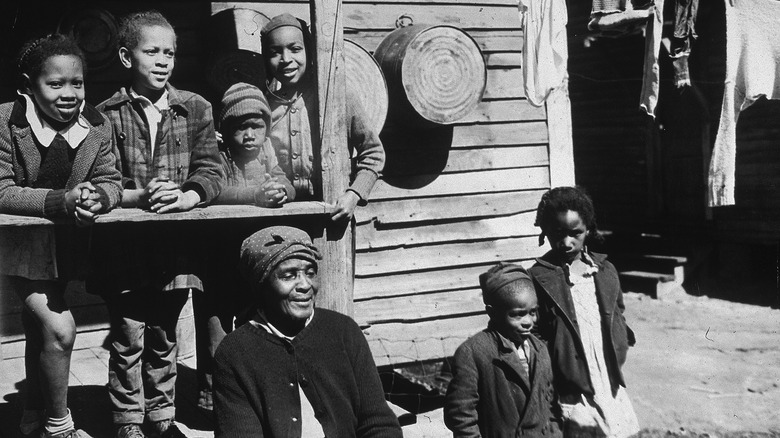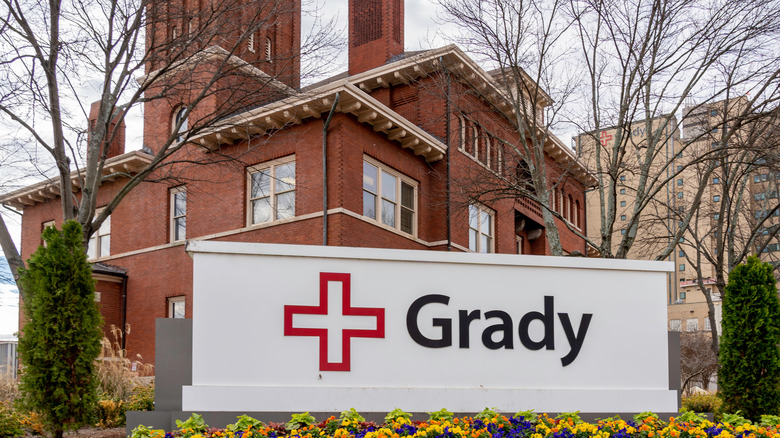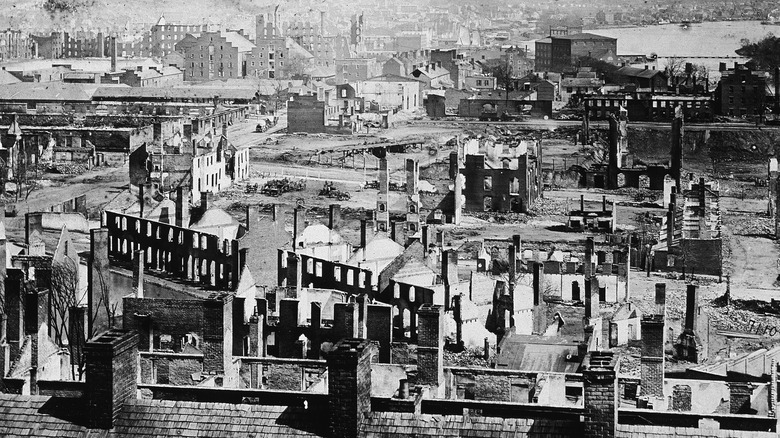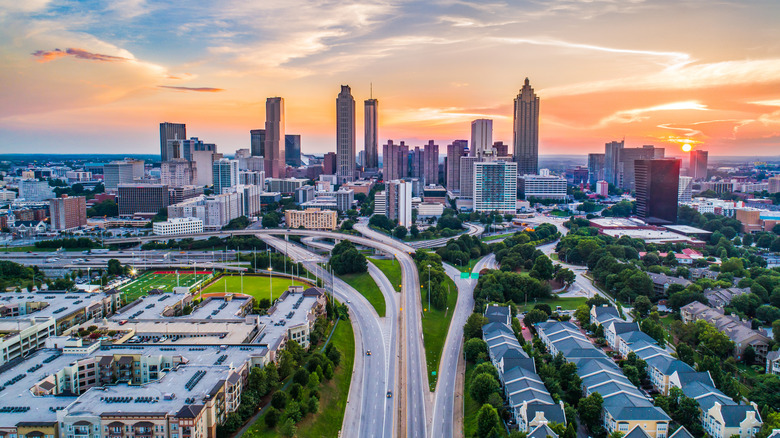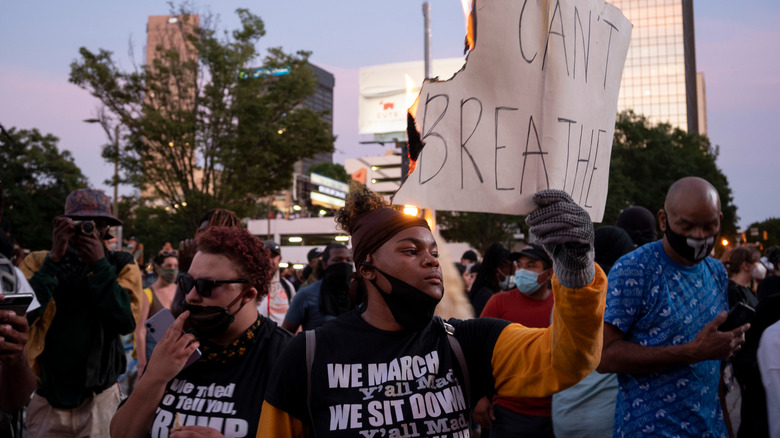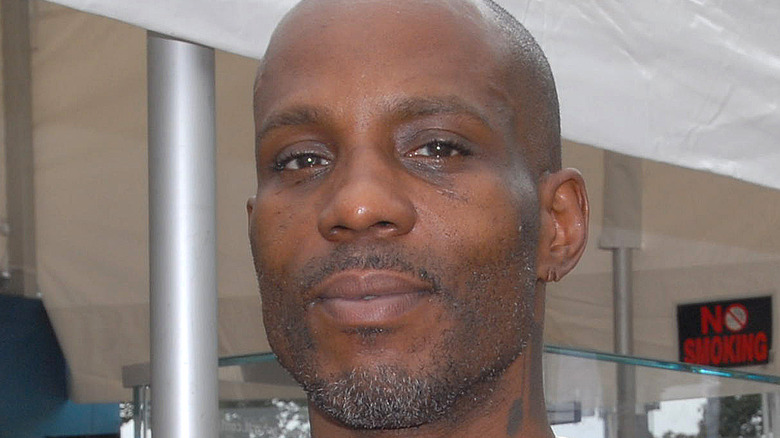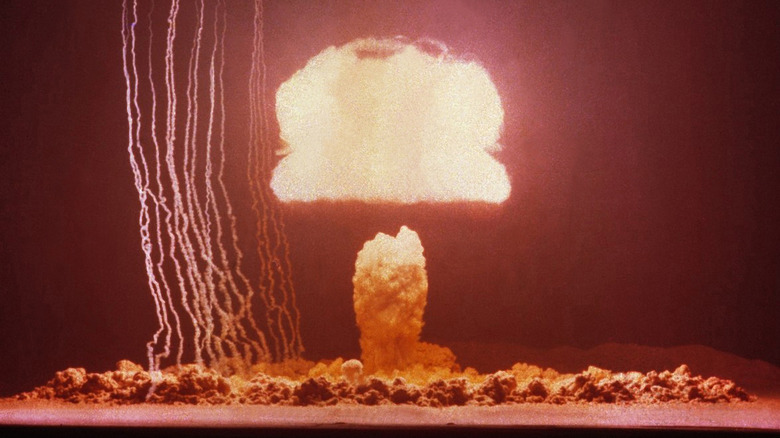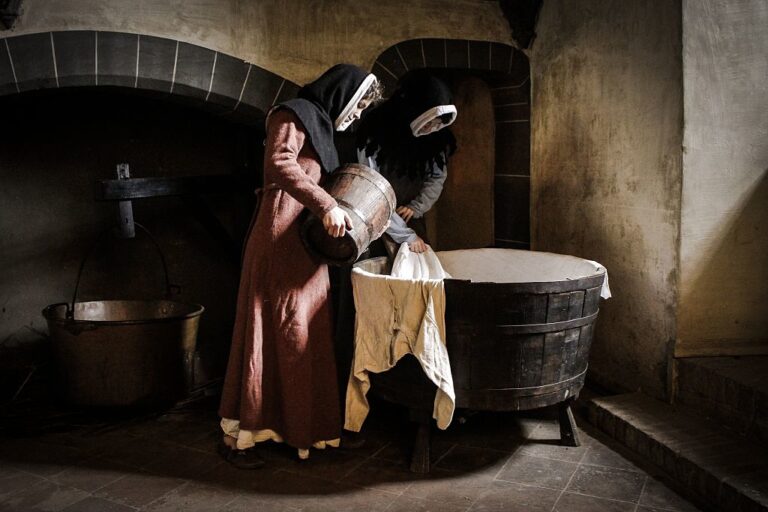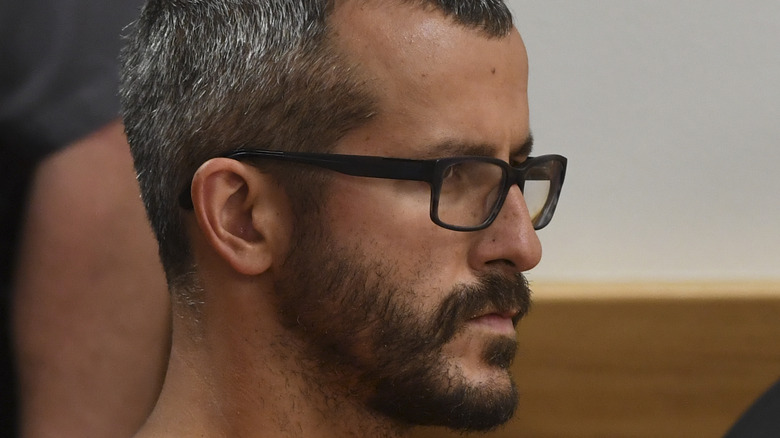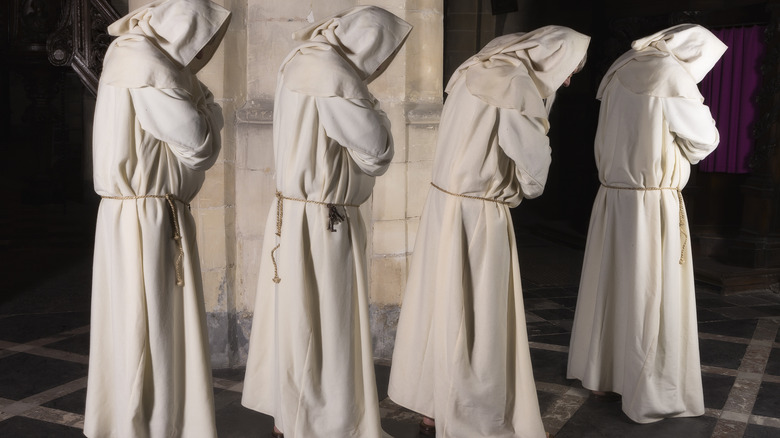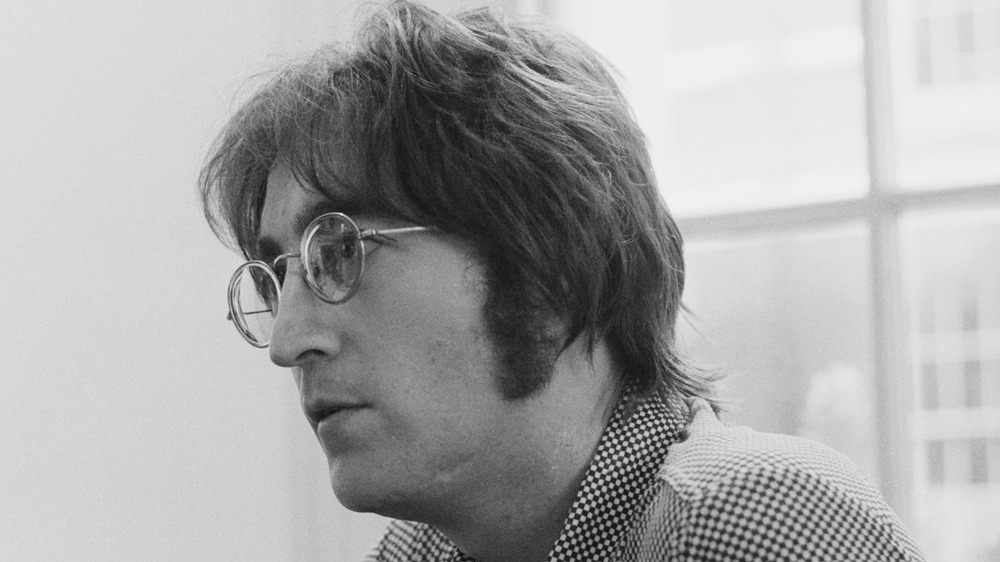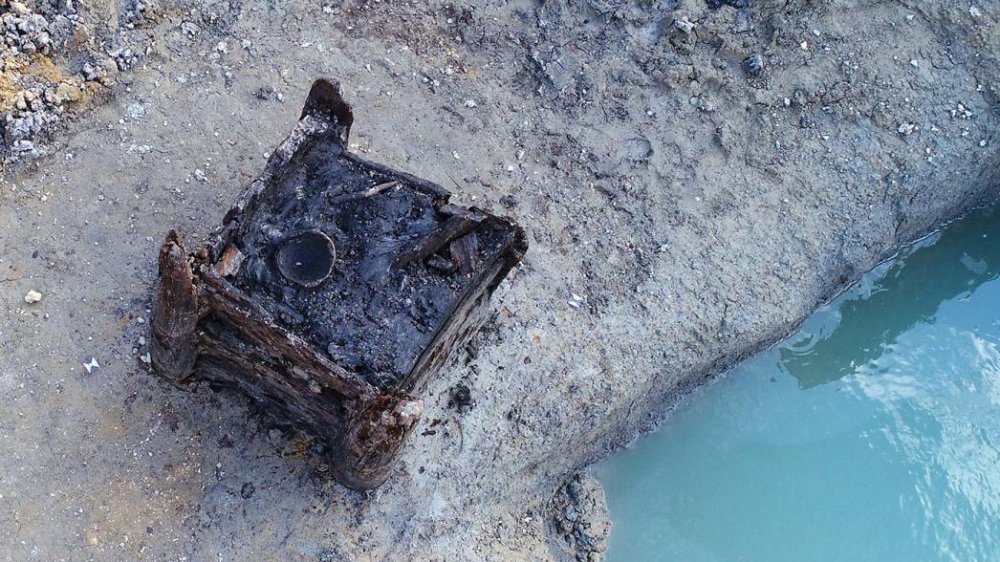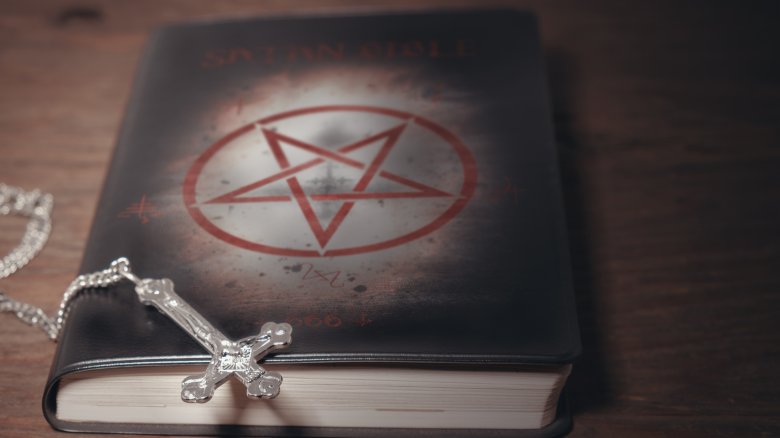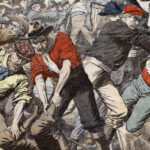
The Untold Truth Of The Atlanta Massacre Of 1906
Racial tensions have never gone away, and U.S. history is dotted with violence specifically targeting Black Americans. Many of these events are not taught to children, so many people don’t know these happened.
Many Americans may not have heard of the Atlanta massacre of 1906. It was an attack on neighborhoods with mostly Black residents that officially left 12 dead, though unofficial estimates peg the death count to 25 or higher, explained Encyclopedia Britannica. Not only did the white mob kill people in the community, but they razed several buildings, homes, and businesses, ensuring the neighborhoods will have a hard time recovering.
The massacre began on September 22 and lasted until September 24. Mobs entered homes and grabbed people off public transport. Newspapers not just in the United States but those across the Atlantic reported on the events in Atlanta. The violence only ended after Georgia’s governor called in the National Guard.
But by that time, the damage had been done. In the aftermath of the massacre, many Black-owned businesses pulled out of mixed neighborhoods, and legislation was passed that essentially segregated Atlanta.
Blame the press
Atlanta had been hailed as a center of growth post-Civil War, wrote the National Council on Public History. It saw immense development and attracted new workers to settle there and work on the rebuilding efforts.
Such rapid growth butted heads with tensions between whites and Blacks. Even though several businesses and colleges catering to both were established, Atlanta reportedly wasn’t a haven for racial equality.
The massacre of 1906 may have been prompted by newspapers and politicians that sought to capitalize on tensions in public. According to Encyclopedia Britannica, race became a central issue during the gubernatorial contest of 1906. One of the candidates was Hoke Smith, the former editor of The Atlanta Journal, who ran against the editor of The Atlanta Constitution, Clark Howell. Local politician Tom Watson reportedly approached both men and promised his endorsement if they supported laws making it hard for Black Americans to vote.
Both newspapers began running sensationalist stories, said the Fulton County Remembrance Coalition. They played up articles where Black men were accused of assaulting white women, which angered the white population. There was even an unsubstantiated piece that four white women were assaulted.
Soon, everything boiled over, and the violence began.
Finding refuge in a hospital
When the massacre began, people brought several of the injured to Grady hospital. It was feeling the strain of the violence. Its segregated wards were filled to the brim. Some of the earliest victims were brought to the hospital and purportedly left to die.
As the violence escalated, many people sought refuge. The mob had reportedly begun pulling people out of trains and homes to attack them. After the hospital staff treated them, many begged to stay inside its safe walls, noted the Fulton County Remembrance Coalition. But because the wards were full, some had to be turned back out to the street.
The streets proved very dangerous. The Fulton County Remembrance Coalition wrote that a couple had been trapped downtown and were chased down by the mob. The woman was stabbed and the man severely beaten.
Some of the injured also tried to seek refuge inside police stations. But as they soon learned, not all law enforcement officials wanted to help them. At the end of a harrowing few days, many families did not even know where the bodies of their loved ones ended up, NPR reported.
The police did not help
The violence of September 1906 in Atlanta only stopped when the National Guard was called in. So, where were local police, and why were they so overwhelmed?
Many police officers allowed the massacre to continue unabated for several days, wrote Encyclopedia Britannica. Some policemen failed or even chose not to intervene when the violence began.
NPR reported that when communities tried to defend themselves, such as those in Brownsville in south Atlanta, the officers arrested the Black citizens instead. In those days, Black people weren’t allowed to own firearms, so by trying to protect themselves, law enforcement decided they were breaking the law instead. Some of the white mob were even deputized by police to go into houses searching for illegal firearms.
White police officers were injured or killed during the riots, too, but it was mainly Black people innocently going about their lives that were hurt.
It took years to rebuild
After the riots, Atlanta became even more segregated as Black businesses moved out of mixed neighborhoods for fear of their safety. One of the most successful Black-owned businesses at the time was Alonzo Herndon’s barbershop Crystal Palace. It was a luxurious store that catered to all citizens, but even that was razed during the riots, and one of his employees was even brutally attacked.
And since so many buildings and homes were destroyed, communities had to be rebuilt again.
The National Coalition on Public History stated that while Black and white leaders came together for a biracial dialogue, Atlanta still became highly segregated. These dialogues ended up exacerbating the class divisions within the city and made Atlanta one of the most socially stratified cities in the country.
It took years before the community could fully rebuild. The city of Atlanta also had to reckon with the events of those three days, but it took decades before it would even be taught in schools.
The Atlanta massacre of 1906 is now taught in schools
Even though the Atlanta massacre of 1906 had an enormous impact on the city and its Black population, it seemed the authorities wanted to hide it. But 100 years after the riots, several civic leaders decided to mark the events of September 1906 with an exhibit, discussions, and even a walking tour, wrote The New York Times. Their goal was to shed light on the massacre and how it affected the city.
NPR said the group also developed a curriculum for middle and high school students. The state of Georgia officially adopted the curriculum, and the Atlanta massacre of 1906 is now taught to students in the state. Other remembrances include plans to erect memorials and formally recognize as many of the victims as they could.
September 1906 was a bloody few days and underscored the racial tensions in Atlanta. What the people of Atlanta have done is ensured the events were not forgotten and taught to students in hopes of keeping its memory alive. Of course, Atlanta continues to grapple with racial tension, especially today, but at least the next generation know about the Atlanta massacre of 1906.

A Look At The Link Between Queen Elizabeth I And Shakespeare
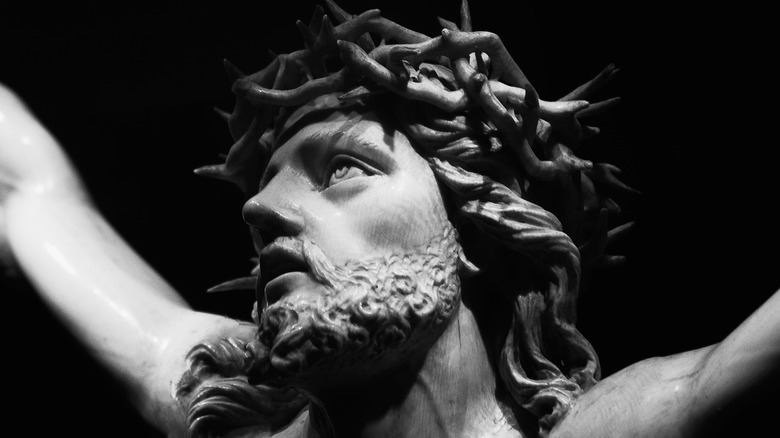
The Crucifixion Of Jesus Explained

The Surprising Thing Ronnie Van Zant Is Buried With

What Tom Petty Was Like The Last Time These Celebs Saw Him Alive

This Former US President Has Been Married The Most Times
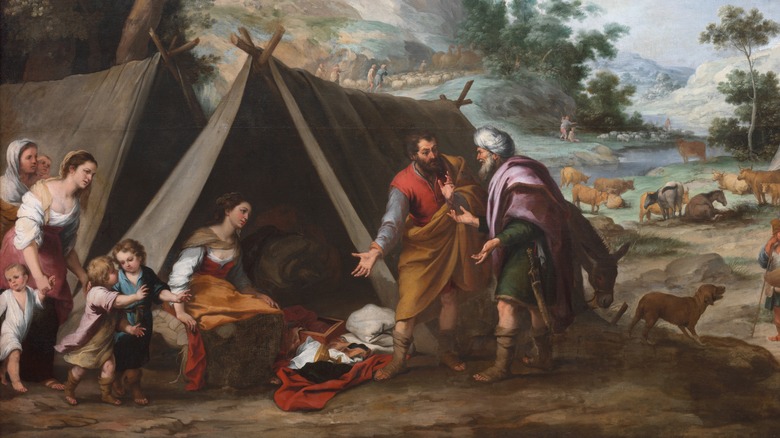
What Rachel And Leah Really Looked Like According To The Bible
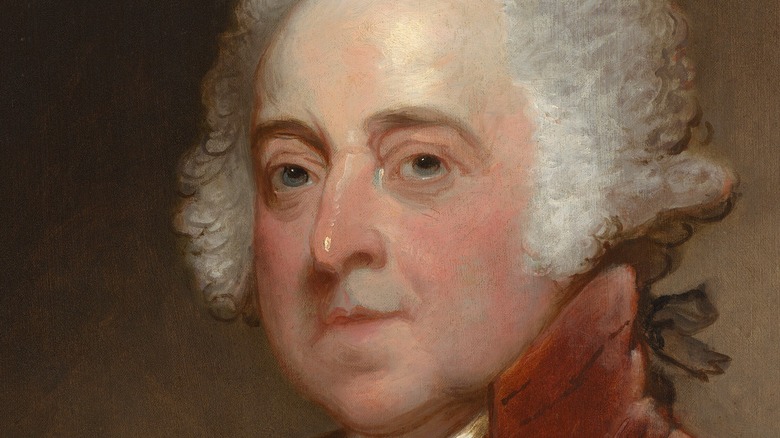
The Reason John Adams Once Pardoned A Man For Treason

Why The 1996 Women's Basketball Team's Gold Medal Was So Important

Steve Jobs' Relationship With Bill Gates Explained
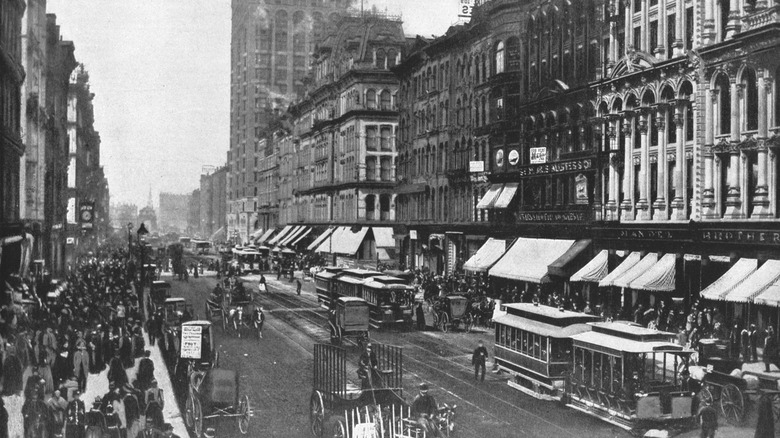
The 1897 Chicago Sausage Vat Murder Explained
